Best bass guitars 2026: four-string and five-string basses for every budget
From modern multiscale models to tried and tested best sellers, we look at the best bass guitars available today

1. The quick list
2. Best bass overall
3. Best budget 5-string
4. Best budget short scale
5. Best budget bass overall
6. Best signature bass
7. Best for beginners
8. Best acoustic/electric bass
9. Best bass for tone options
10. Best bass for build quality
11. Best premium bass
12. Best bass for low end
13. Best for rock
14. Buying advice
15. How we choose products
While guitar players and singers might hog the limelight, we know as bassists that it would all fall apart if it weren’t for us, right? That’s why it’s crucial that we’re armed with one of the best bass guitars available to us. Bridging the gap between melody and rhythm, the bass guitar is the glue that holds a band’s mix together.
The best bass guitars allow you to hold down the low end, without things sounding too muddy. You can be in competition with the kick drum, frequency-wise, so it’s important that your instrument has clarity and punch to ensure that you’re heard properly. Luckily, all our picks in this guide have pickups that are voiced with that in mind.
From 5-string metal machines to vintage-style 4-string classics, there are so many to choose from. The likes of Fender, Rickenbacker, Music Man and more are all making some of the best basses they ever have, and there really is something for everyone.
The quick list
Want to get to the good stuff without reading walls of text? Well, here you'll find a roundup of all the best bass guitars, with links to read more if you like what you see.

The Fender American Performer Precision Bass was launched in 2018 and brings together the exceptional American-built quality you've come to expect from Fender with the tone you’ve been dreaming about. The Greasebucket tone circuit is a nice touch, adding in a bit of extra tonal variety, while the satin finish makes it a dream to play.

The SUB RAY5 is an impressive instrument from top to bottom, with the build quality you associate with Music Man instruments and a booty-rattling tonal performance that belies its equally impressive price-tag. The level of finishing is very good too, and the player gets a whole heap of bass for their buck.
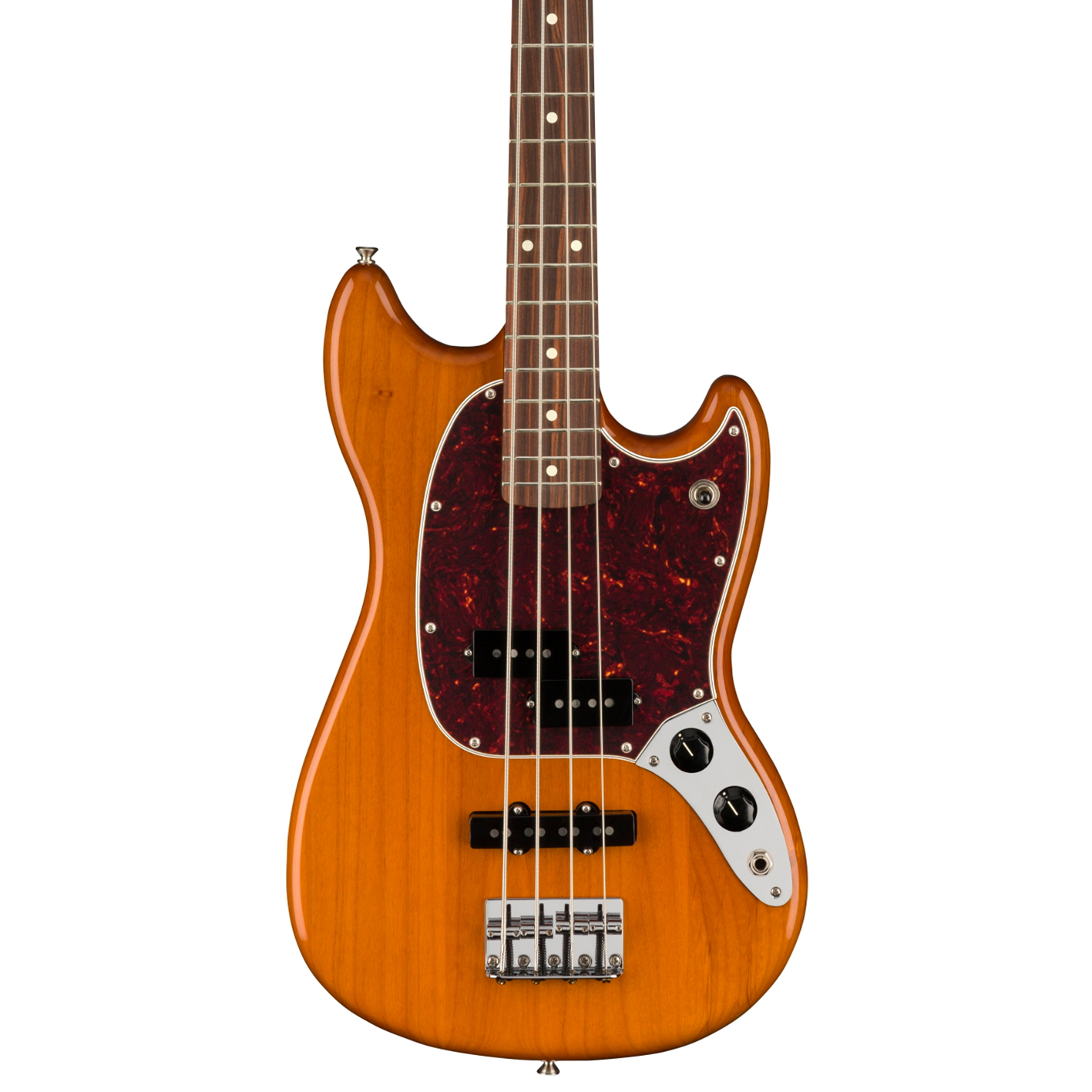
Short-scale basses have gone through something of a renaissance recently. Here, playability is impressive while the choice of pau ferro as a fingerboard timber gives the bass more bounce and a harder attack. Effective for all playing styles, pick and fingerstyle players will especially love it.
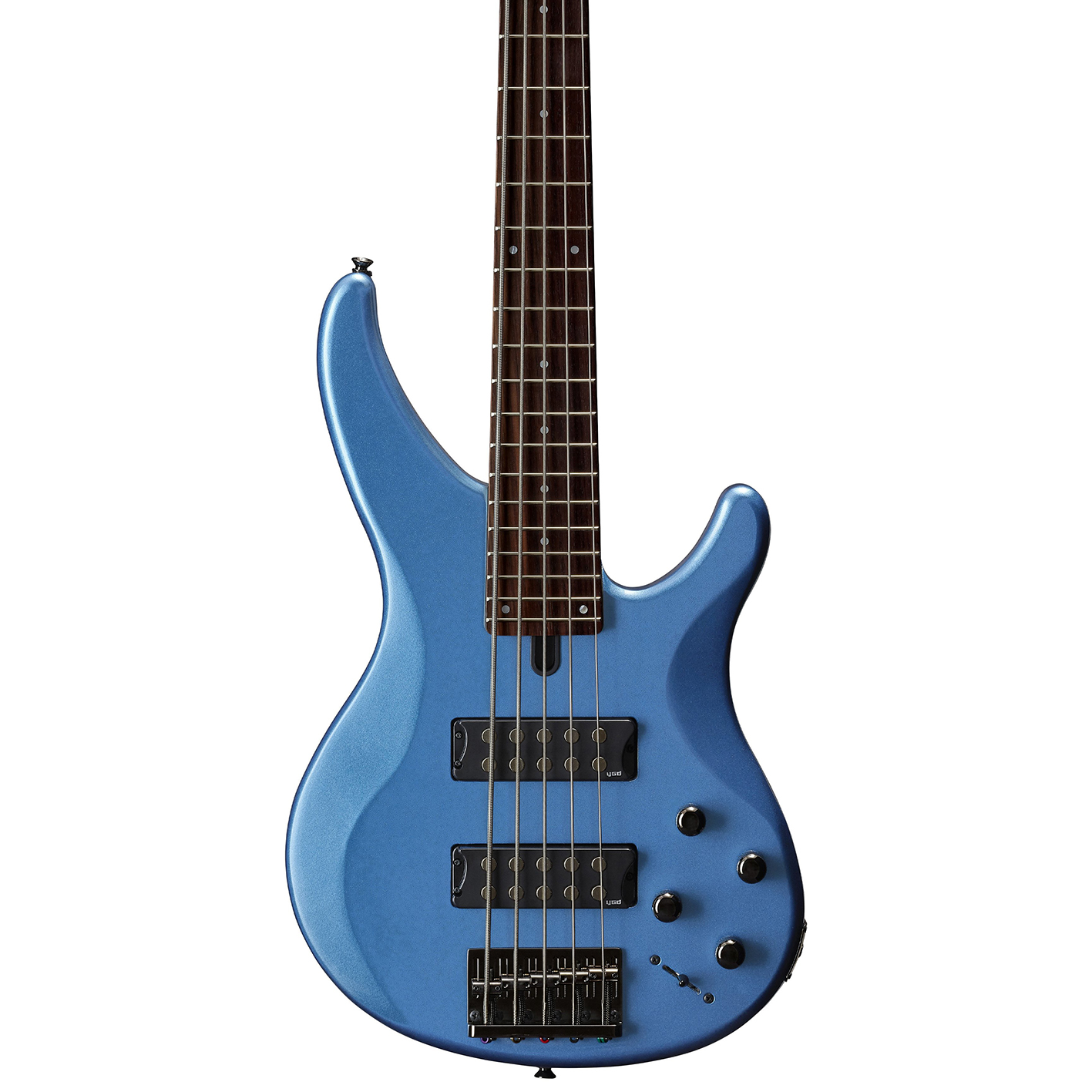
This budget five-string bass guitar competes well with basses costing twice the price, incorporating an impressive pickup and circuit combination, solidly effective hardware and an overall setup that makes you want to play it. Available in assorted colours, touches like the sculpted pickup casings and the comfortable neck profile make this bass a real winner.
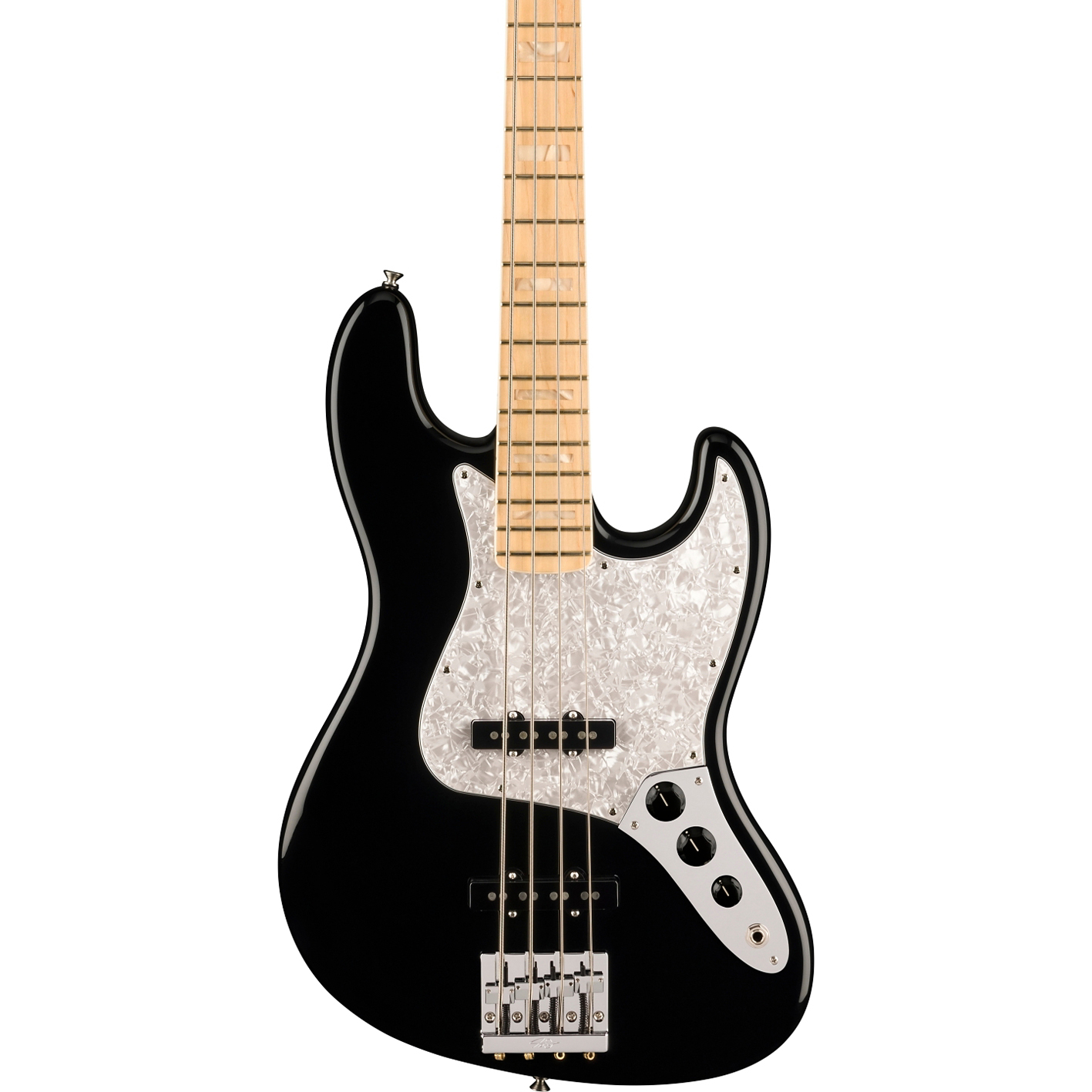
This bass is a very lively performer all round with a grind and twang rarely heard in a bass of this calibre. Straight out of the supplied Deluxe gigbag, this bass bowls you over with its playability, fine setup and sturdy construction. Players of all styles can make use of the features and tones on offer, but at this price, few Jazz basses play as well as this model.

Short scale bass guitars aren’t for every taste, that’s for sure, but they did happen to be big enough for perhaps the best-known band in history, The Beatles. For under $/£/€400 you get a sweet-sounding, well made bass with plenty of charm. Thanks to its shorter scale length, it’s easier for younger learners to use and the maple body and neck deliver a nice, snappy twang which compliments clean guitars well.
Load the next 6 products... ↓
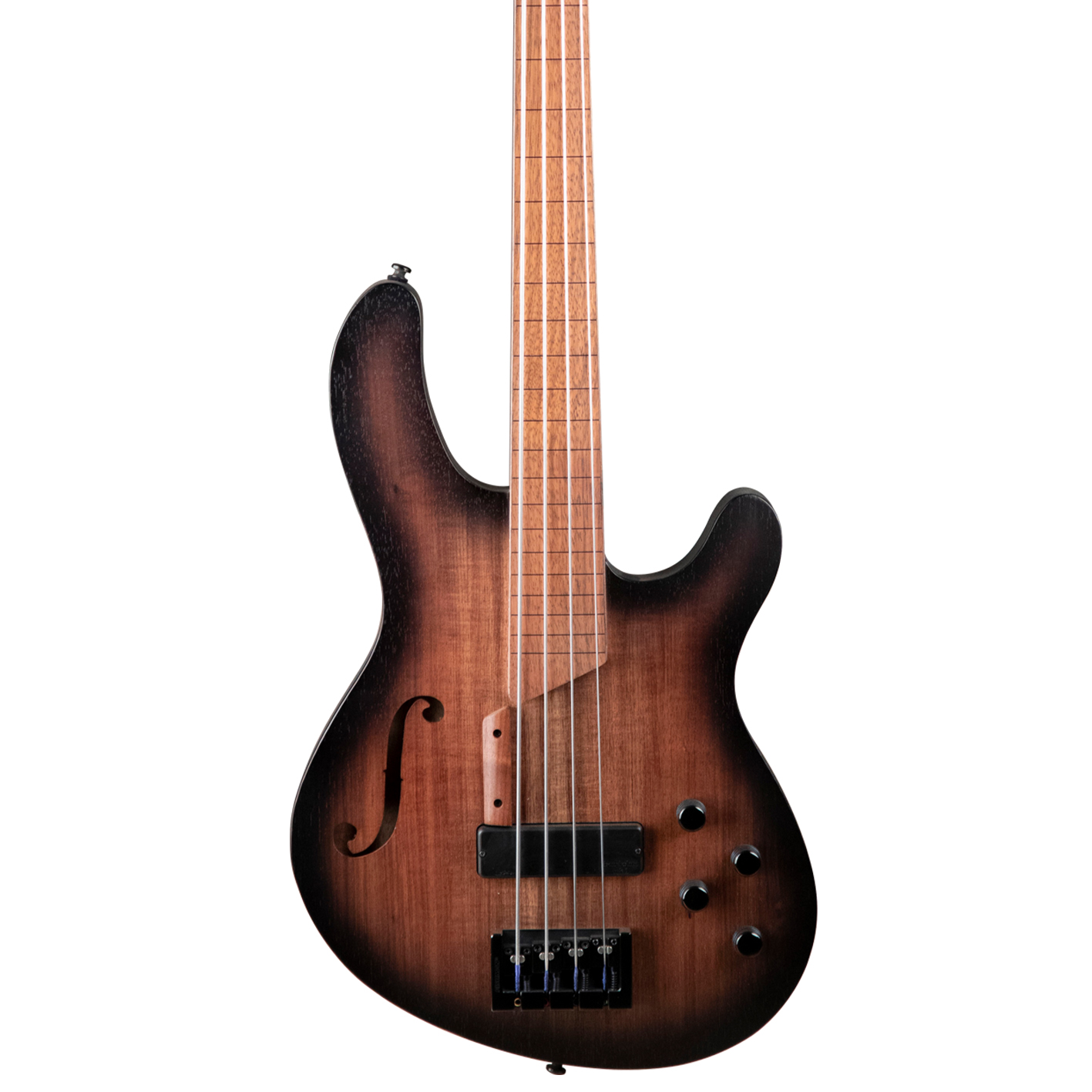
This fretless bass offers both acoustic and electric bass tones, all within one glorious looking instrument. It’s got a Bartolini MK-1 pickup that delivers punchy, rumbly low end that retains great clarity. It’s then also got a Fishman Power Bridge piezo pickup that gives you a lovely natural acoustic tone. This, combined with the fretless fingerboard can give you a sound very close to an upright bass, only this is a lot more practical!
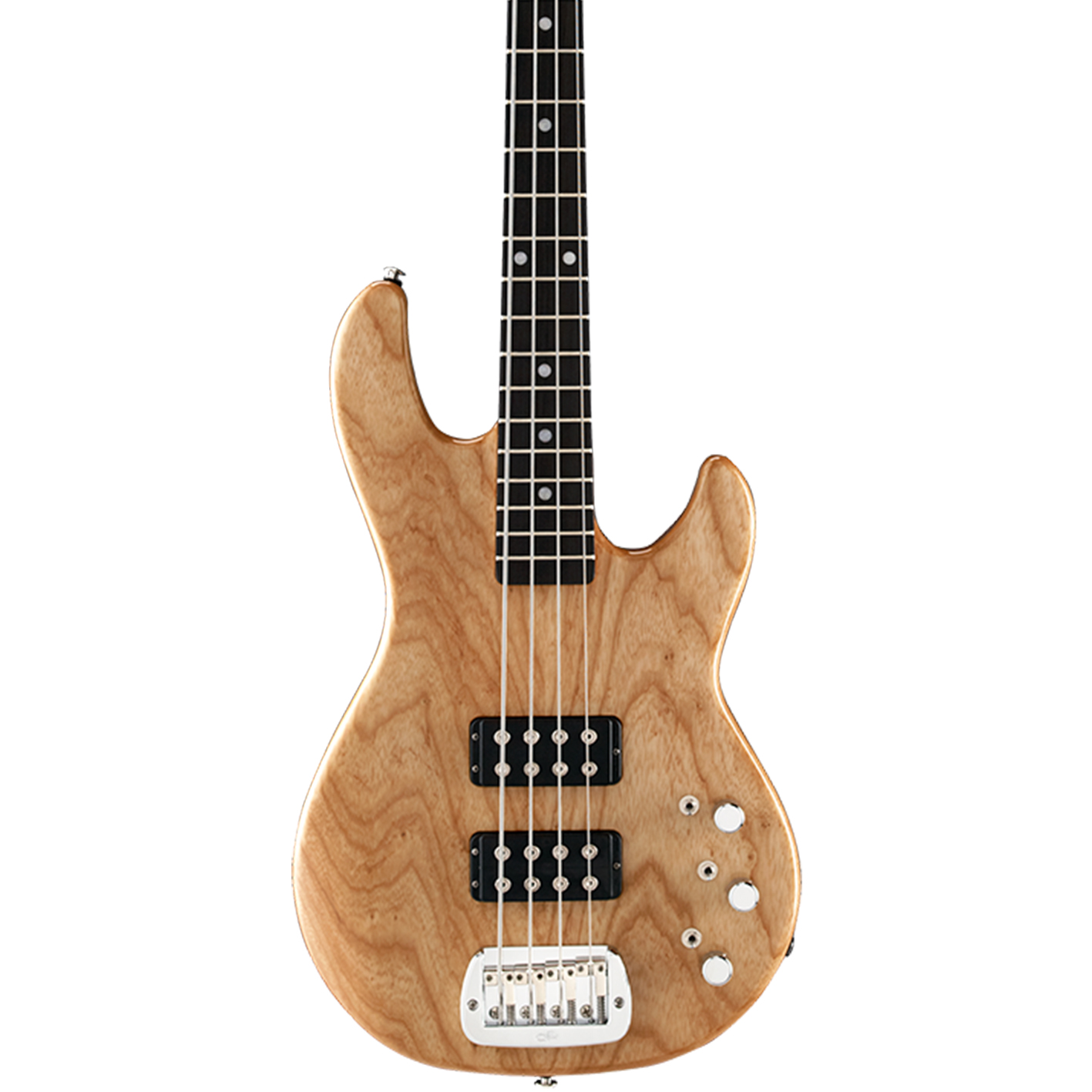
With an active two-band EQ, series/parallel pickup switching and selective preamp operation, the player has plenty of options at their disposal with which to sculpt their tone. Substantially built and solidly constructed, this bass can address any musical style and perform admirably, while slap and pop players will enjoy the glassy high-end available.
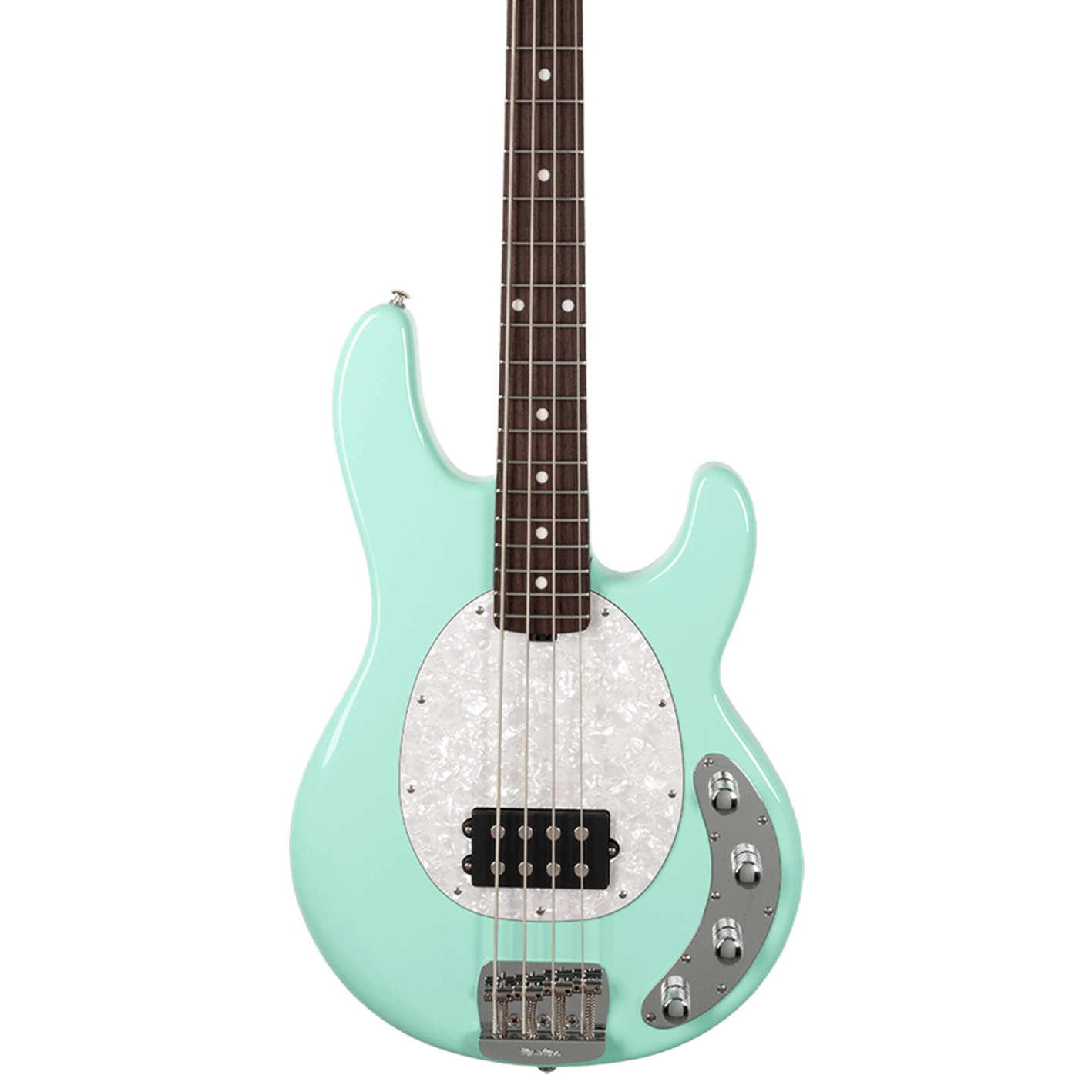
Making use of new technology and addressing certain areas of modification, the bass has been brought bang up to date and now features lightweight machine heads, a redesigned bridge and Neodymium pickups, all of which have reduced the overall weight. The active circuit has been modified while the necks are now of a roasted maple construction which has contributed to the new tone.
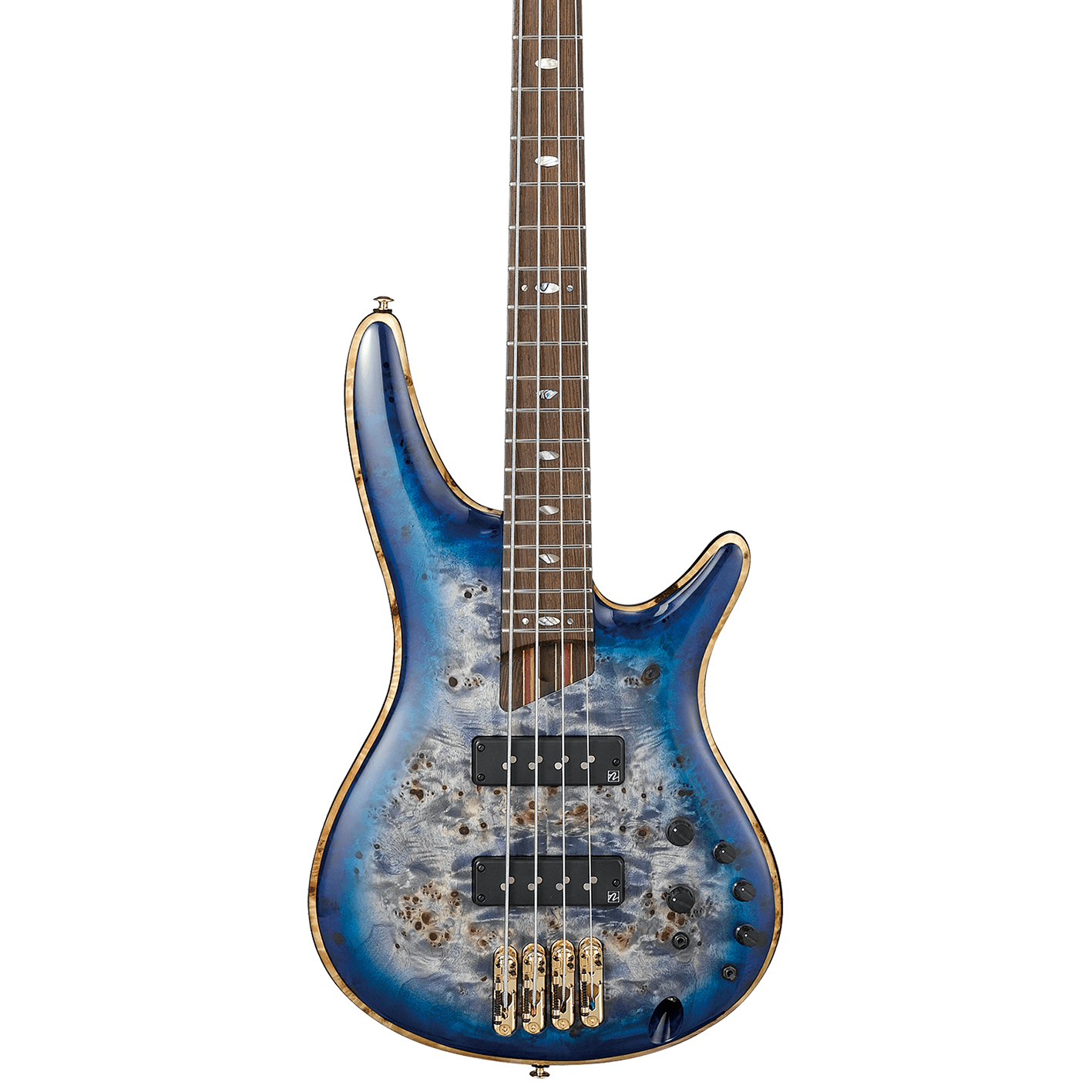
Boasting top of the line parts and materials, the Ibanez Premium range radiates quality. The poplar burl top on the mahogany body really catches the eye, especially with the abalone binding. It’s fitted with a pair of Nordstrand Big Single pickups. These are like supercharged single coil pickups - they’re true single coils in a soap bar enclosure, but they’re overwound so there’s plenty of output. You can cover vintage style tones easily, but they’re punchy enough to cater for modern, heavier styles of music too.
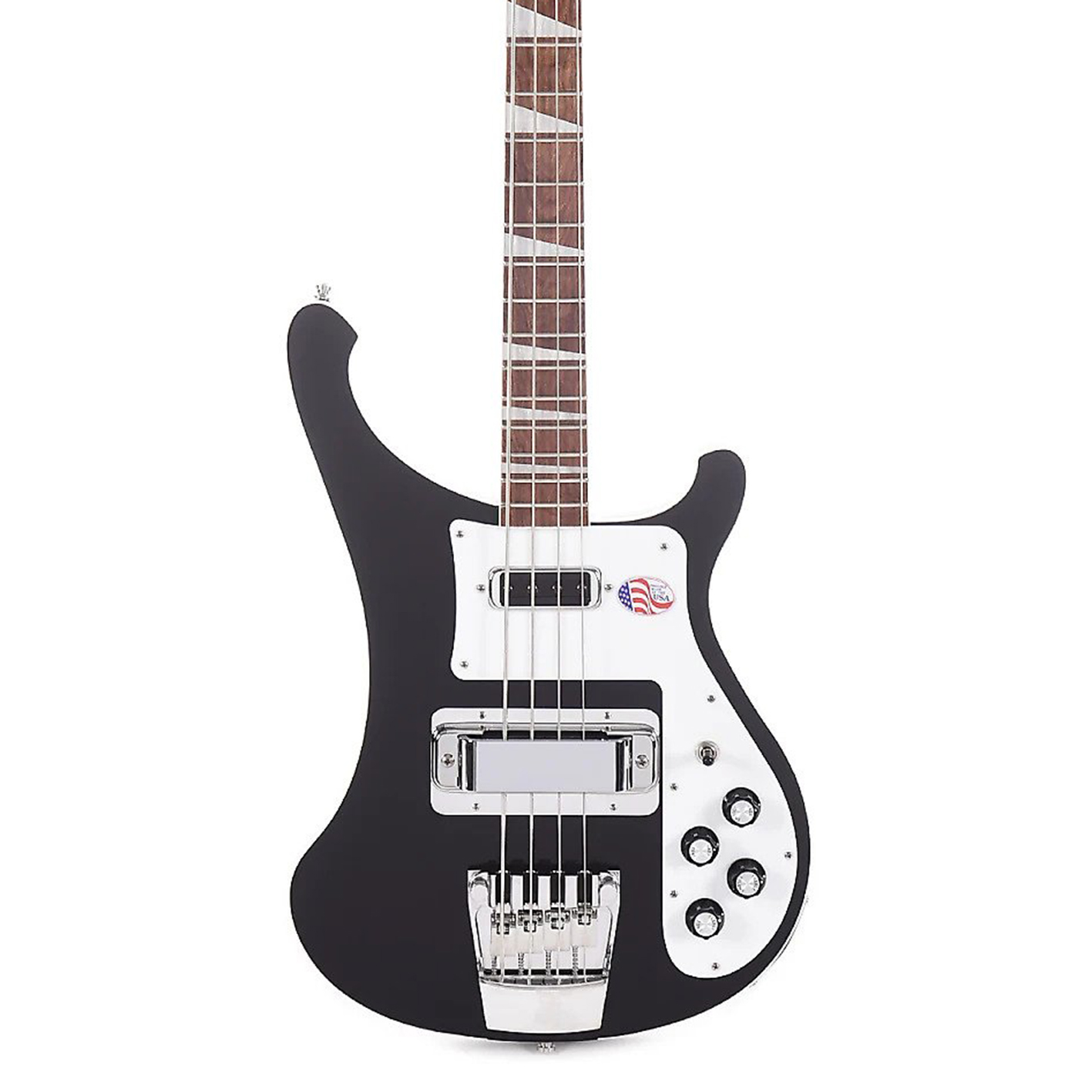
The Rickenbacker 4003 covers a lot of ground - you’ll see metal bassists use them alongside indie and rock players. Both Lemmy and Paul McCartney were avid Ricky players. The two pickups combined with a comprehensive control panel allow you to dial in some amazing low end rumble and growl, as well as warm and mellow bass tones, depending on what you need.
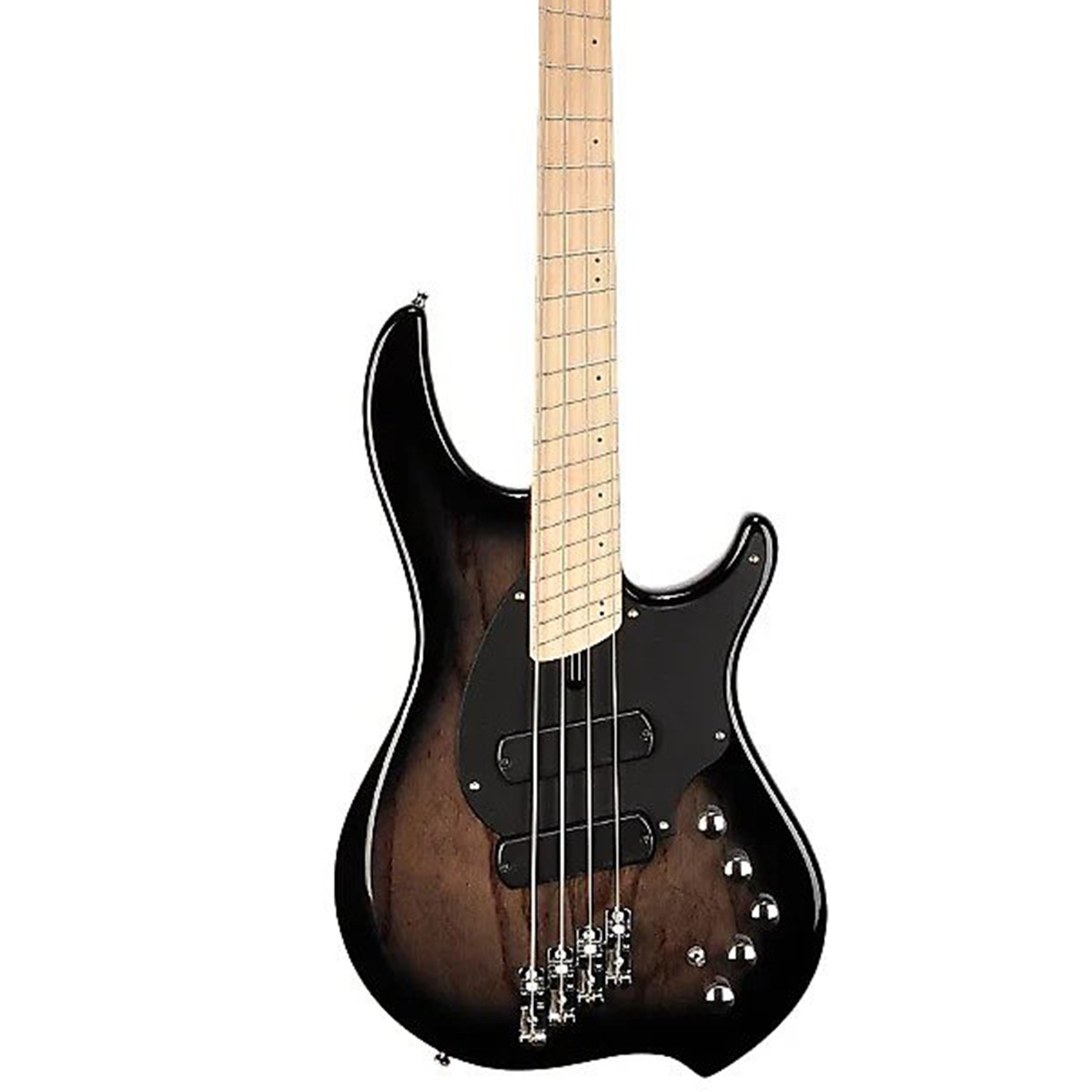
The Dingwall Combustion 4 offers players incredible, high-end playability, sound and looks without the super high-end price tag. Sure, they’re still not cheap, but a quick glance at the specs will tell you why. The pickups in this thing are amazing - there are three Dingwall FD3-Ns which offer a punchy, high output. You can get them sounding nice and smooth but also gnarly and aggressive. With an EMG 3-band EQ, active/passive toggle switch and a 4-position Quad-tone pickup selector, you’ve got a huge scope for crafting very different tones.
The best bass guitars available today
MusicRadar's got your back
Here you'll find full write ups for all of the best bass guitars. We test the products featured in our guides extensively, so that our recommendations deliver for your specific needs.
Best bass overall
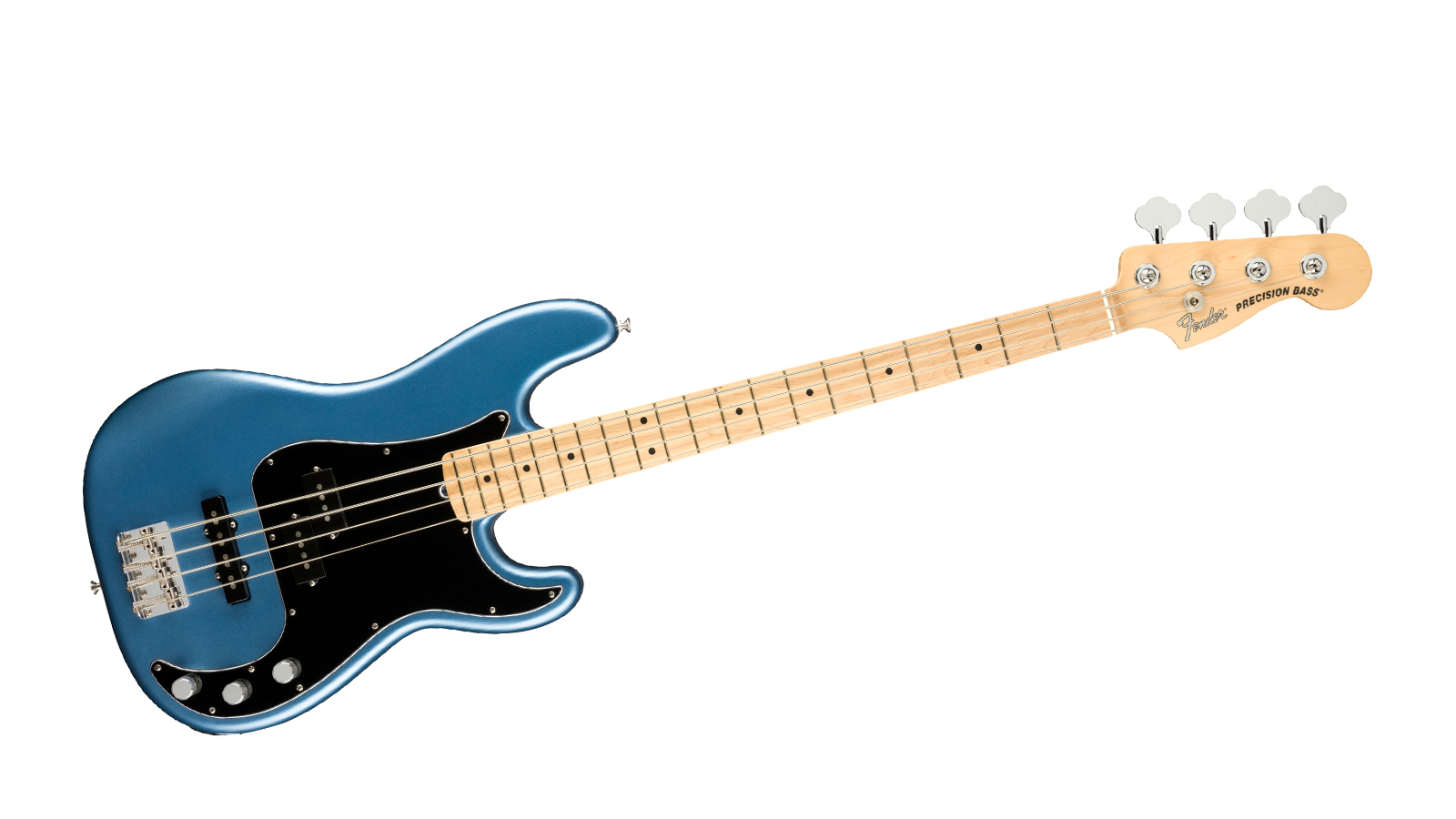
Specifications
Reasons to buy
Reasons to avoid
Look in any guitar store and you’ll find the bass section stacked full of Fenders. You see, while it’s primarily known for its more famous Strats and Teles, Fender has actually had a near-monopoly on the bass scene for decades thanks largely to its Jazz and Precision models.
The Fender American Performer Precision Bass was launched in 2018 and brings together the exceptional American-built quality you've come to expect from Fender with the tone you’ve been dreaming about. The Greasebucket tone circuit is a nice touch, adding in a bit of extra tonal variety, while the satin finish makes it a dream to play.
Read the full Fender American Performer Precision Bass review
Best budget 5-string

Specifications
Reasons to buy
Reasons to avoid
The SUB RAY5 is an impressive instrument from top to bottom, with the build quality you associate with Music Man instruments and a booty-rattling tonal performance that belies its equally impressive price-tag.
The level of finishing is very good and, although it lacks a little of the presentation sparkle of its big brothers at the top of the range, the player gets a whole heap of bass for their buck.
Playability is top notch and for those venturing into the world of five-string basses for the first time, this is the perfect introduction. Available in various colours, buy with confidence and be amazed!
Read the full Sterling by Music Man Sub Ray5 review
Best budget short scale

Specifications
Reasons to buy
Reasons to avoid
Short-scale basses have gone through something of a renaissance recently, bringing more female players into the world of bass, as well as offering plummy old-school tones that are very much in fashion right now.
With both split and single-coil pickups on offer, a selection of tones are available, but be aware that the shorter scale length reduces the speaking length of each string so the tone is markedly softer than you may be accustomed to with a long-scale bass.
Playability is impressive while the choice of pau ferro as a fingerboard timber gives the bass more bounce and a harder attack. Effective for all playing styles, pick and fingerstyle players will especially love it.
Read our full Fender Mustang Bass review
Best budget bass
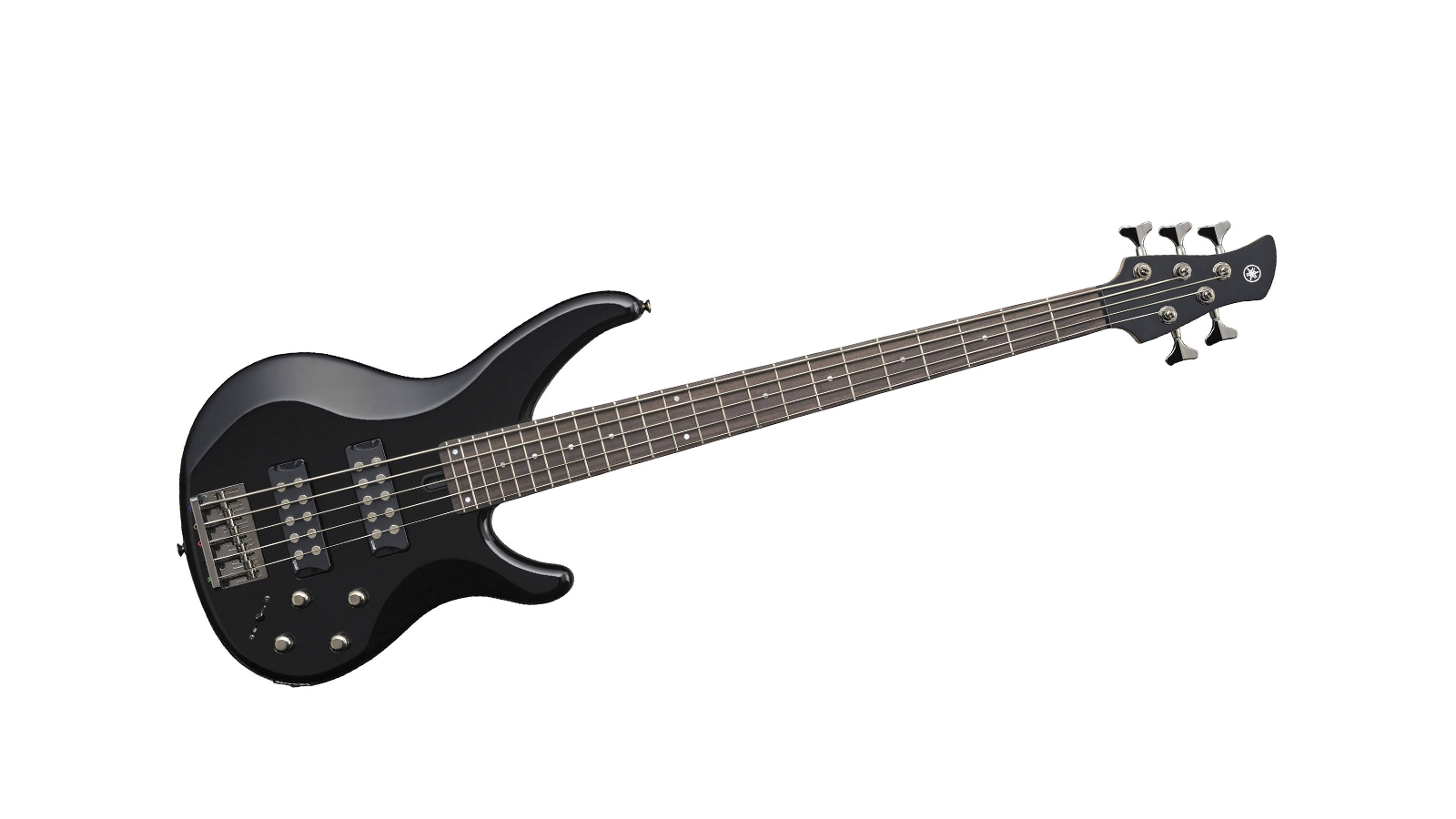
Specifications
Reasons to buy
Reasons to avoid
Yamaha consistently produce high-quality basses at every price point and even at the cheap bass guitar end of the scale, their instruments are some of the best bass guitars around.
This budget five-string bass guitar competes well with basses costing twice the price, incorporating an impressive pickup and circuit combination, solidly effective hardware and an overall setup that makes you want to play it.
If this guitar incorporated a mid-EQ control as well, it would likely trounce many instruments priced well above it; but even so, the bass projects very well with authority and clarity. Available in assorted colours, touches like the sculpted pickup casings and the comfortable neck profile make this bass a real winner.
Read the full Yamaha TRBX305 review
Best signature model
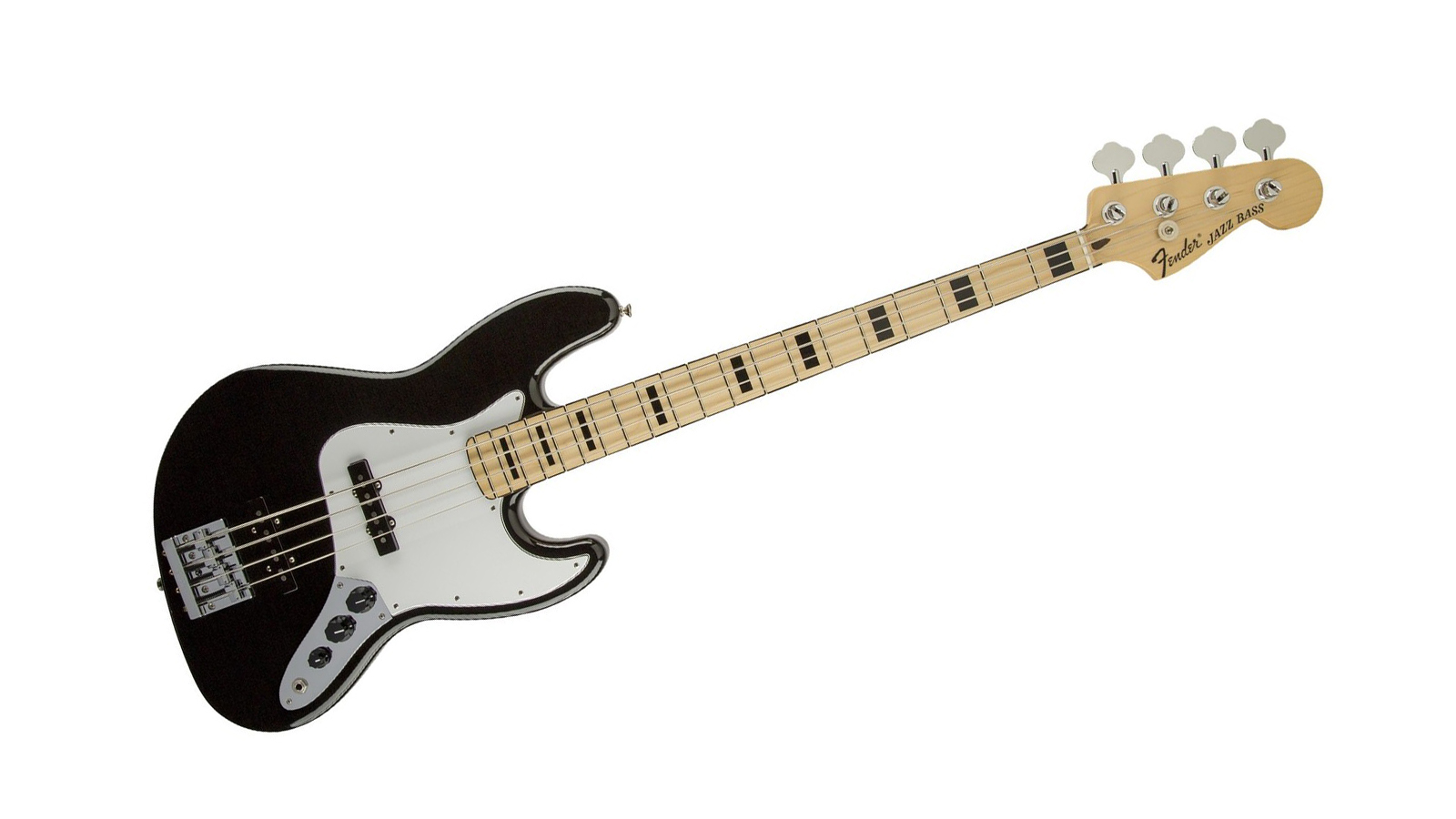
Specifications
Reasons to buy
Reasons to avoid
This bass is a very lively performer all round with a grind and twang rarely heard in a bass of this calibre. Straight out of the supplied Deluxe gigbag, this bass bowls you over with its playability, fine setup and sturdy construction.
Black block position markers retain a vintage vibe along with the black gloss and white scratchplate aesthetic. Players of all styles can make use of the features and tones on offer, but at this price, few Jazz basses play as well as this model. Prepare to be as blown away as we were.
Read the full Fender Geddy Lee Signature Jazz bass review
Best for beginners
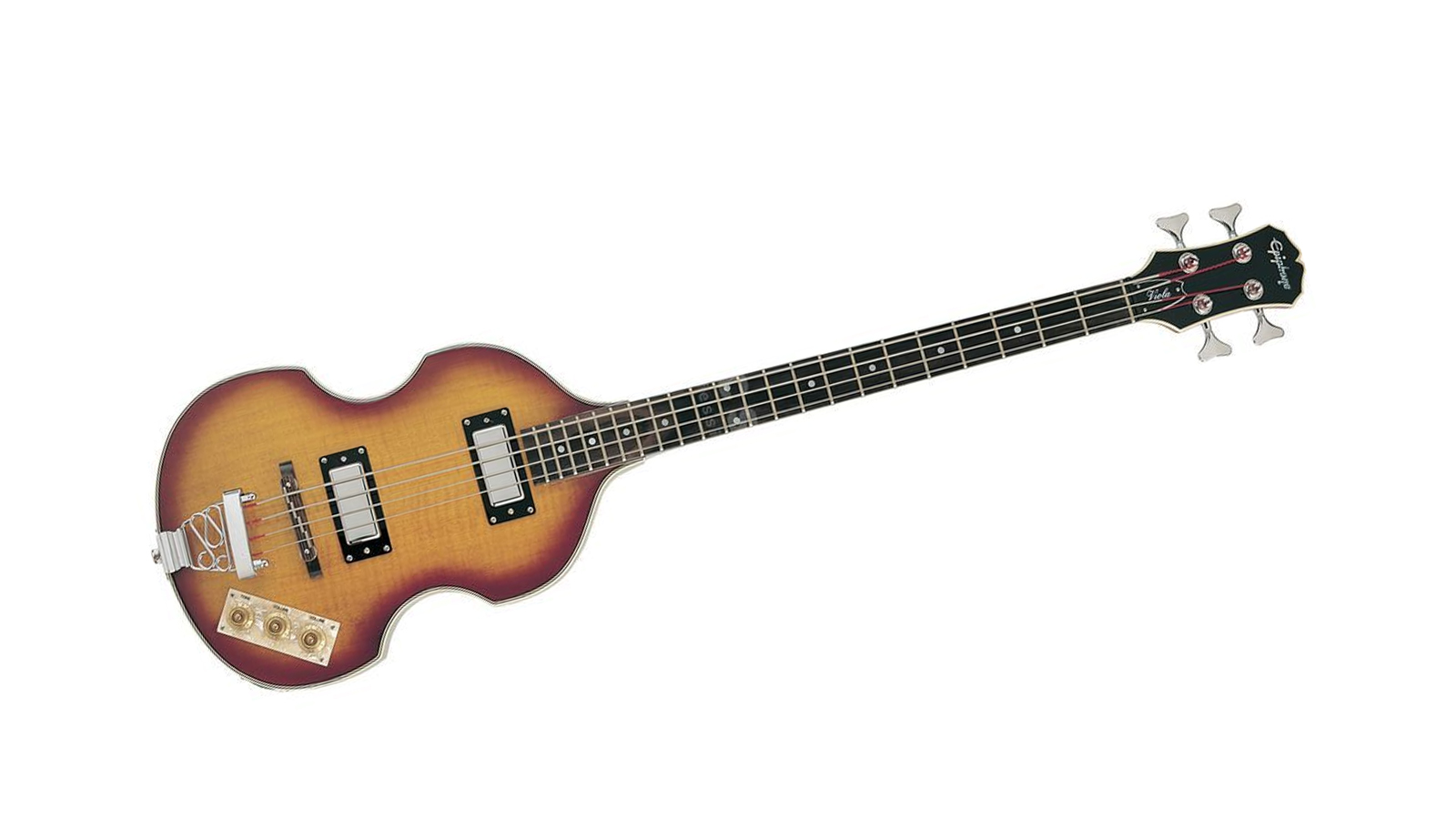
6. Epiphone Viola Bass
Our expert review:
Specifications
Reasons to buy
Reasons to avoid
Short scale bass guitars aren’t for every taste, that’s for sure, but they did happen to be big enough for perhaps the best-known band in history. Paul McCartney himself is synonymous with the Viola bass shape, although his was a German-made Hofner, but these iconic little instruments are still going strong today thanks to the Epiphone Viola.
For under $/£/€400 you get a sweet-sounding, well made bass with plenty of charm. Thanks to its shorter scale length, it’s easier for younger learners to use and the maple body and neck deliver a nice, snappy twang which compliments clean guitars well.
Best acoustic electric bass
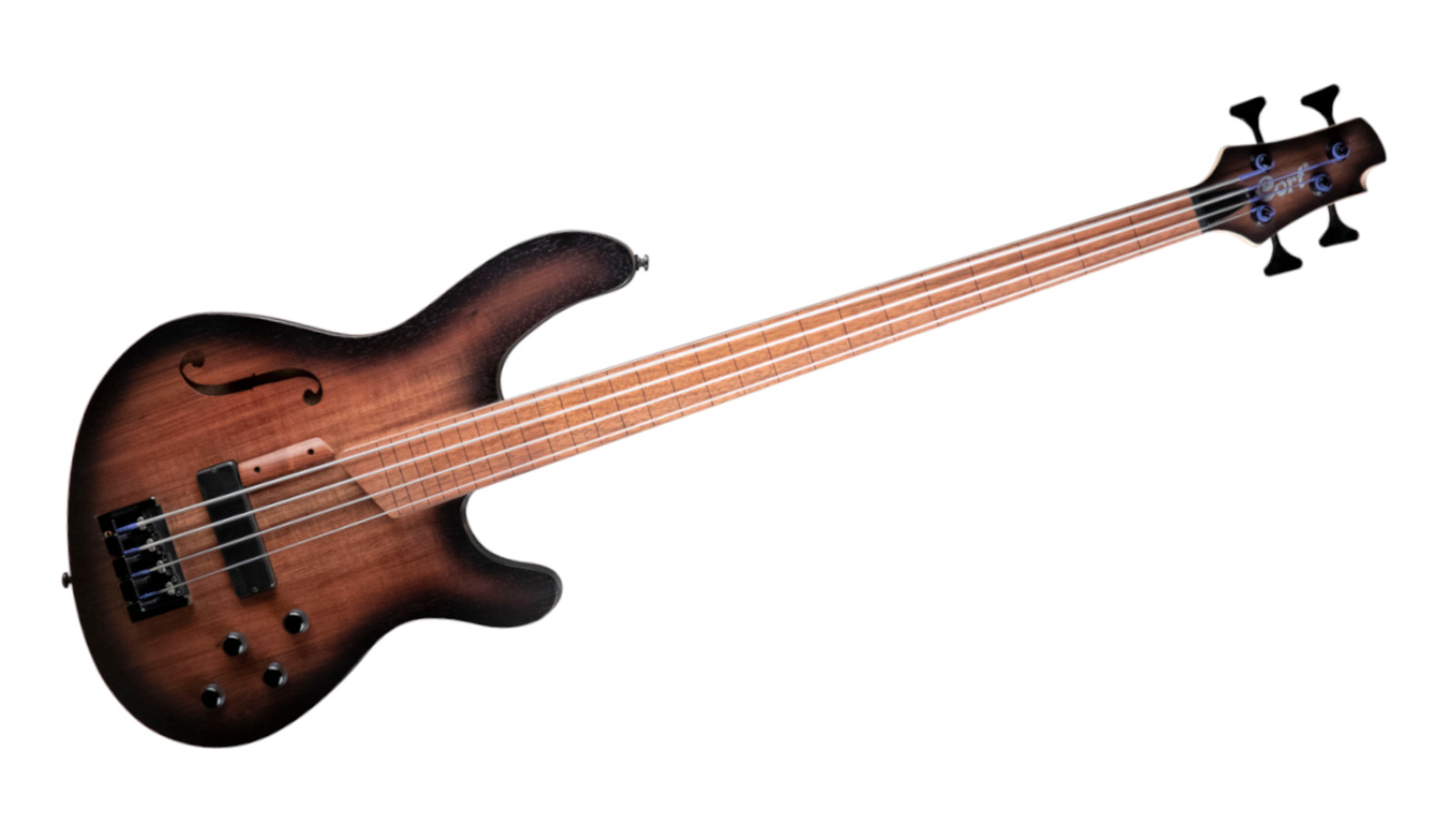
7. Cort B4FL MHPZ
Our expert review:
Specifications
Reasons to buy
Reasons to avoid
This fretless bass offers both acoustic and electric bass tones, all within one glorious looking instrument. It’s got a Bartolini MK-1 pickup that delivers punchy, rumbly low end that retains great clarity. It’s then also got a Fishman Power Bridge piezo pickup that gives you a lovely natural acoustic tone. This, combined with the fretless fingerboard can give you a sound very close to an upright bass, only this is a lot more practical!
Now, fretless basses aren’t for everyone, but they do offer a very distinct and unique sound, and feel. It does have a lined fingerboard though, so players that are new to a fretless neck will still be able to see where the notes are.
Add to that Hipshot tuners that keep your tuning stable, a handy thumb rest and a beautiful F-holed mahogany top sat on an ovangkol body and you’ve got a highly spec’d, versatile bass that doesn’t cost the earth.
Best for tone options
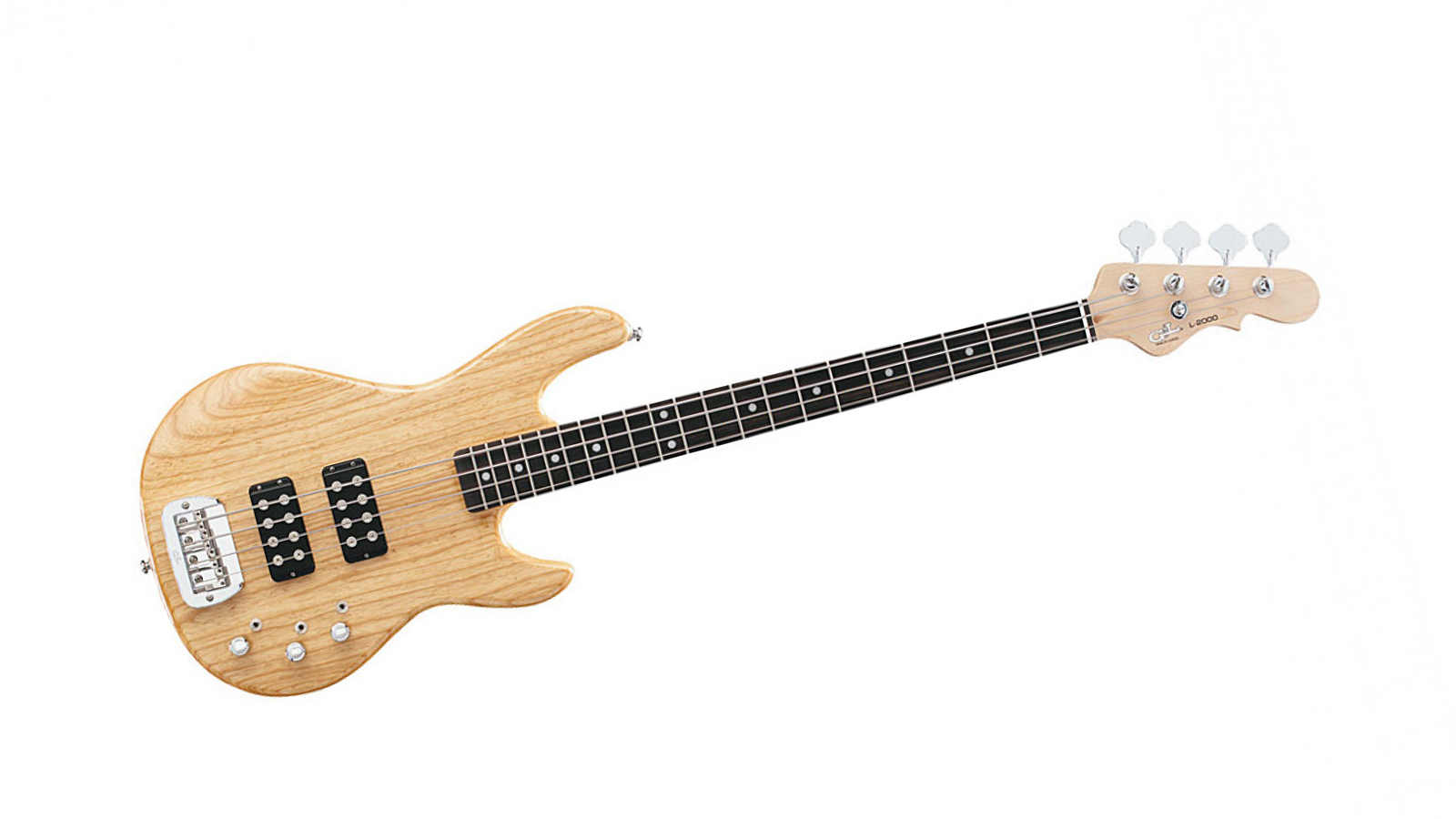
8. G&L Tribute L2000
Our expert review:
Specifications
Reasons to buy
Reasons to avoid
Leo Fender's third instrument company, G&L, was where he claimed he built the finest instruments of his life. Despite this being a cheaper version of the American-made L2000, there is no doubting the quality on offer or the tones on display.
With an active two-band EQ, series/parallel pickup switching and selective preamp operation, the player has plenty of options at their disposal with which to sculpt their tone.
Substantially built and solidly constructed, this bass can address any musical style and perform admirably, while slap and pop players will enjoy the glassy high-end available. The L2000 Tribute is a joy to play and well worth investigating.
Best for build quality
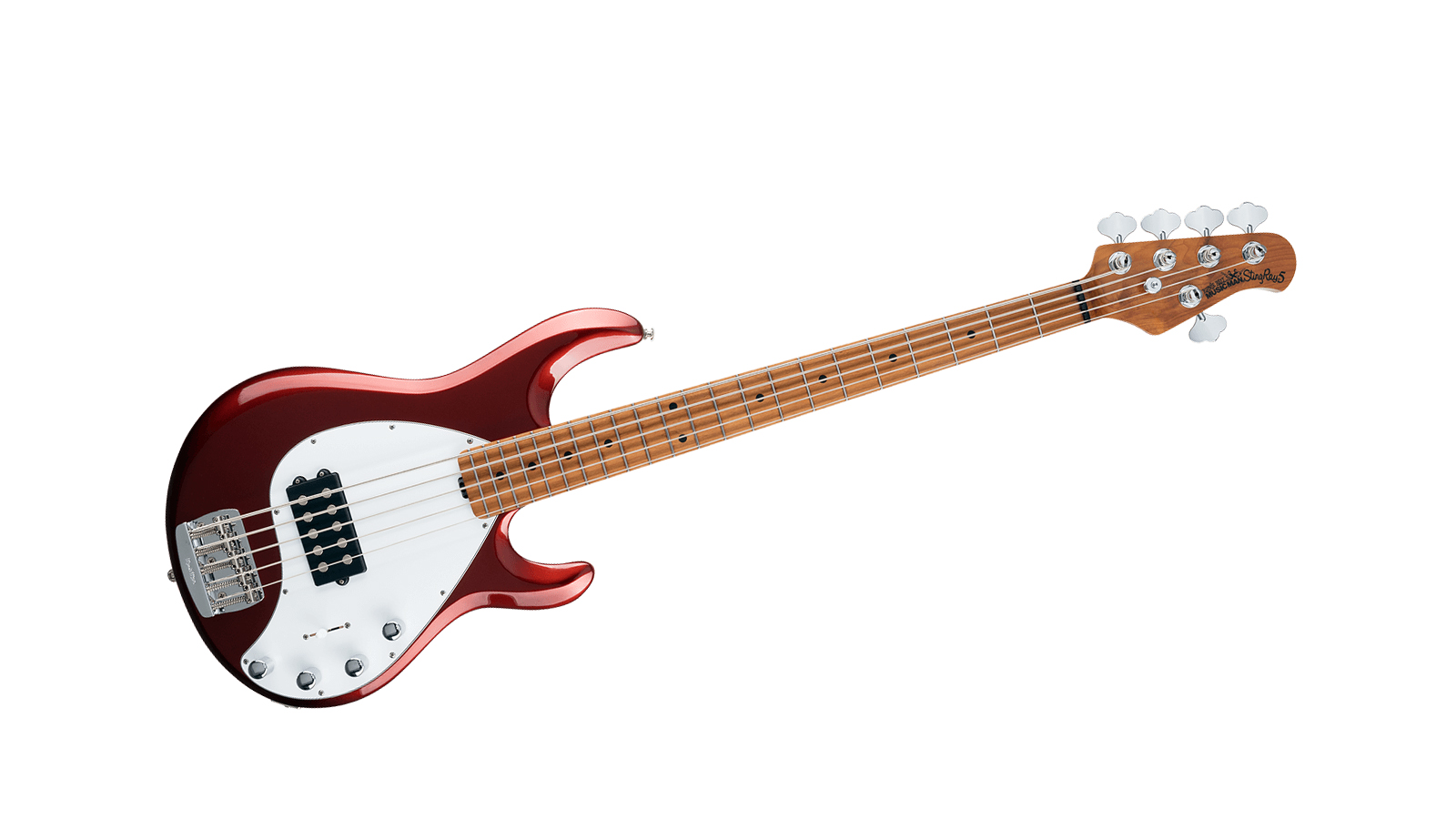
9. Music Man StingRay Special
Our expert review:
Specifications
Reasons to buy
Reasons to avoid
The StingRay has gone through many changes over the years, but the launch of the Special was perhaps the most radical overhaul of the old favourite. Making use of new technology and addressing certain areas of modification, the bass has been brought bang up to date and now features lightweight machine heads, a redesigned bridge and Neodymium pickups, all of which have reduced the overall weight.
The active circuit has been modified while the necks are now of a roasted maple construction which has contributed to the new tone. But don't panic, the famed StingRay tone is still there, it's just been brought into the here and now.
Best premium bass
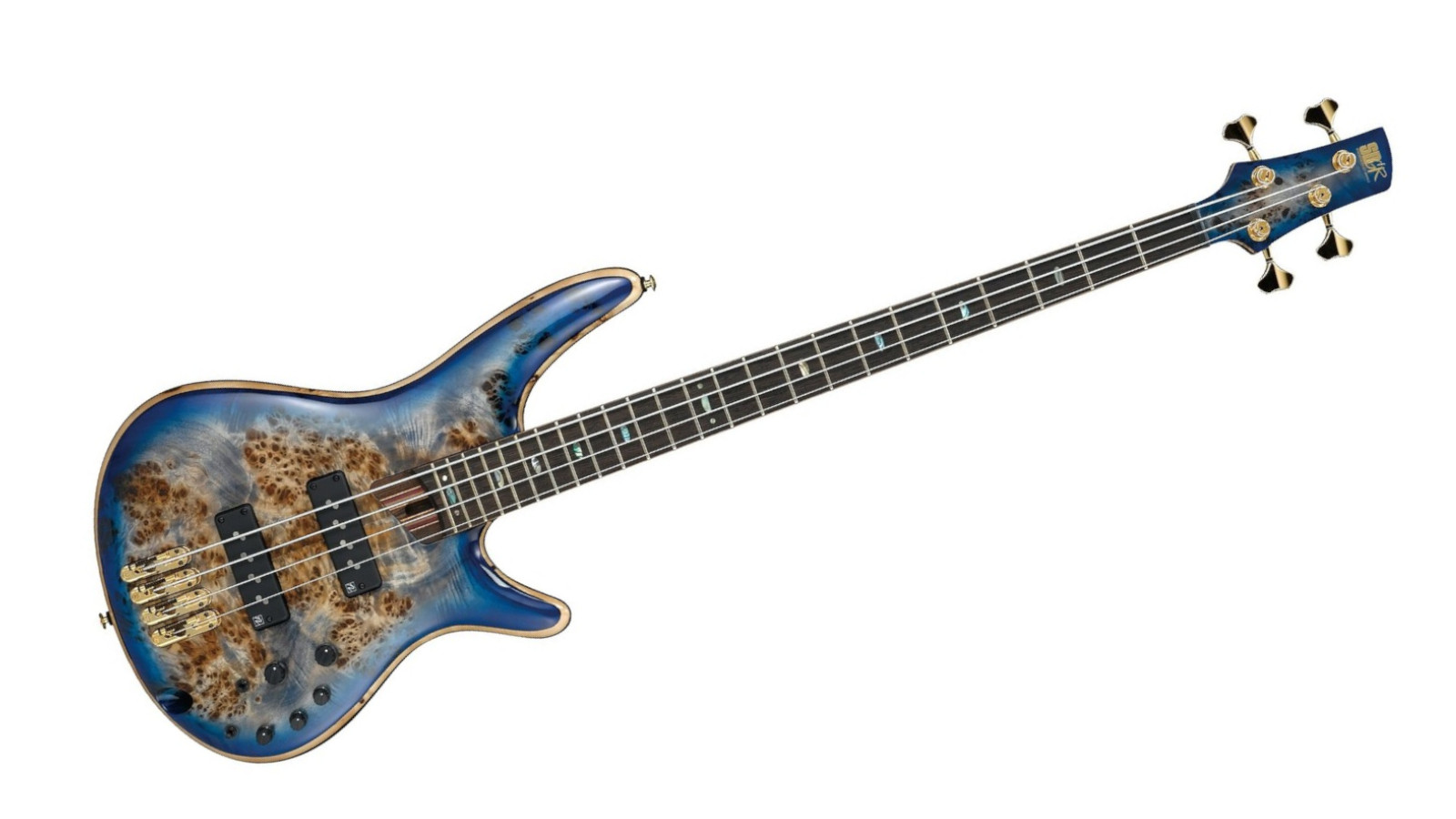
10. Ibanez SR2600
Our expert review:
Specifications
Reasons to buy
Reasons to avoid
Boasting top of the line parts and materials, the Ibanez Premium range radiates quality. The SR2600 looks like a premium bass too - the poplar burl top on the mahogany body really catches the eye, especially with the abalone binding.
It’s fitted with a pair of Nordstrand Big Single pickups. These are like supercharged single coil pickups - they’re true single coils in a soap bar enclosure, but they’re overwound so there’s plenty of output. You can cover vintage style tones easily, but they’re punchy enough to cater for modern, heavier styles of music too. As well as a three band EQ, you’ve also got a three-way mid frequency switch so you can really nail where you need to be in the mix.
It’s nice and lightweight, it’s built to a great standard and it plays beautifully, with a nice, thin neck. Definitely one of the best bass guitars for those that prefer a modern style.
Best for low end
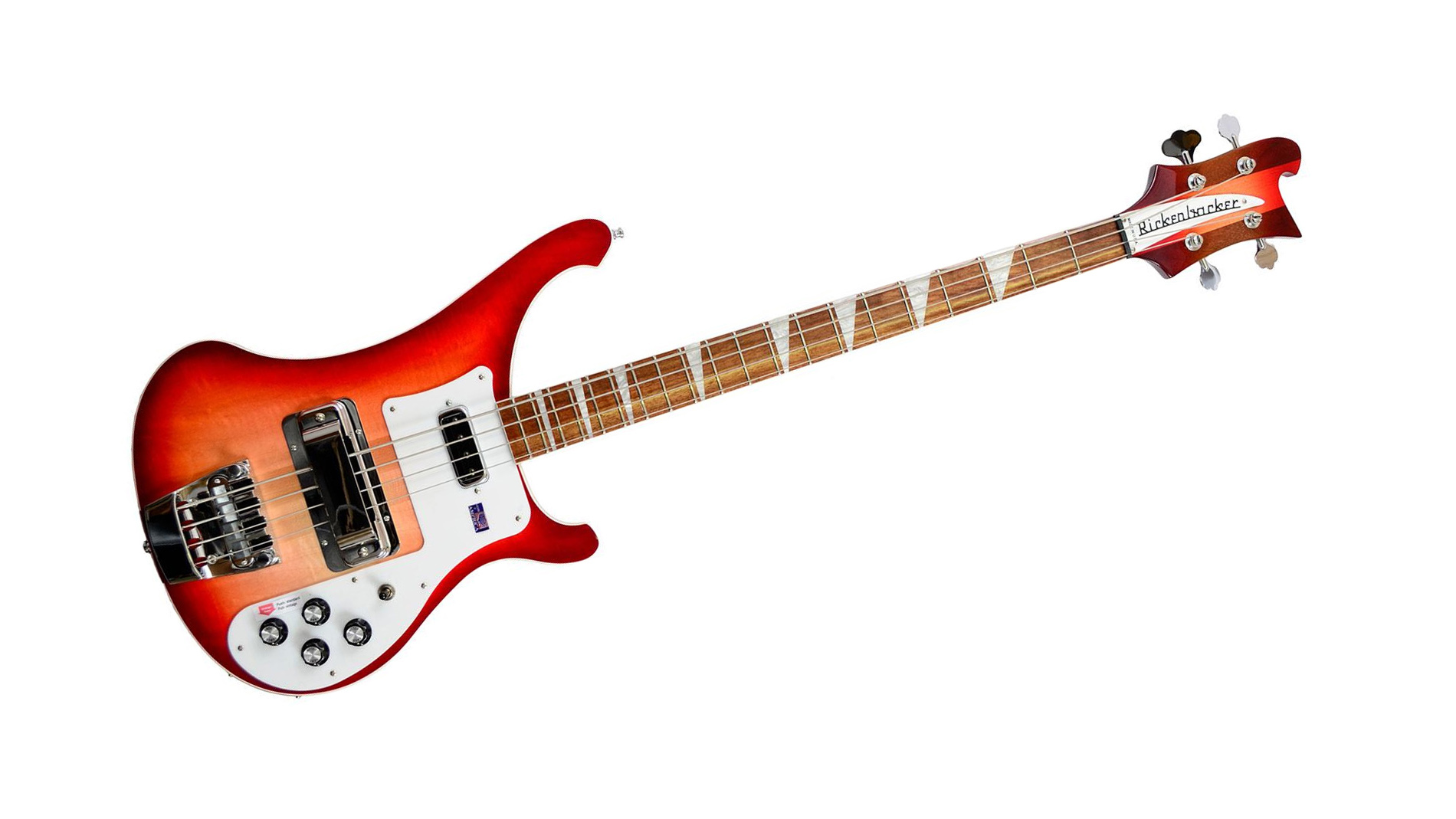
Specifications
Reasons to buy
Reasons to avoid
It’s hard to not include one of the most recognisable instruments of all time on our list of the best bass guitars. The Rickenbacker 4003 covers a lot of ground - you’ll see metal bassists use them alongside indie and rock players. Both Lemmy and Paul McCartney were avid Ricky players.
The two pickups combined with a comprehensive control panel allow you to dial in some amazing low end rumble and growl, as well as warm and mellow bass tones, depending on what you need. The horseshoe hand rest can make for some really comfortable playing positions, though you can take it off if it’s not for you.
These basses sound incredible, and they’re made to a really high standard. However, they’re not cheap, plus due to the way in which they’re manufactured and distributed, there can be some really long waiting lists for them.
Read the full Rickenbacker 4003 review
Best for rock
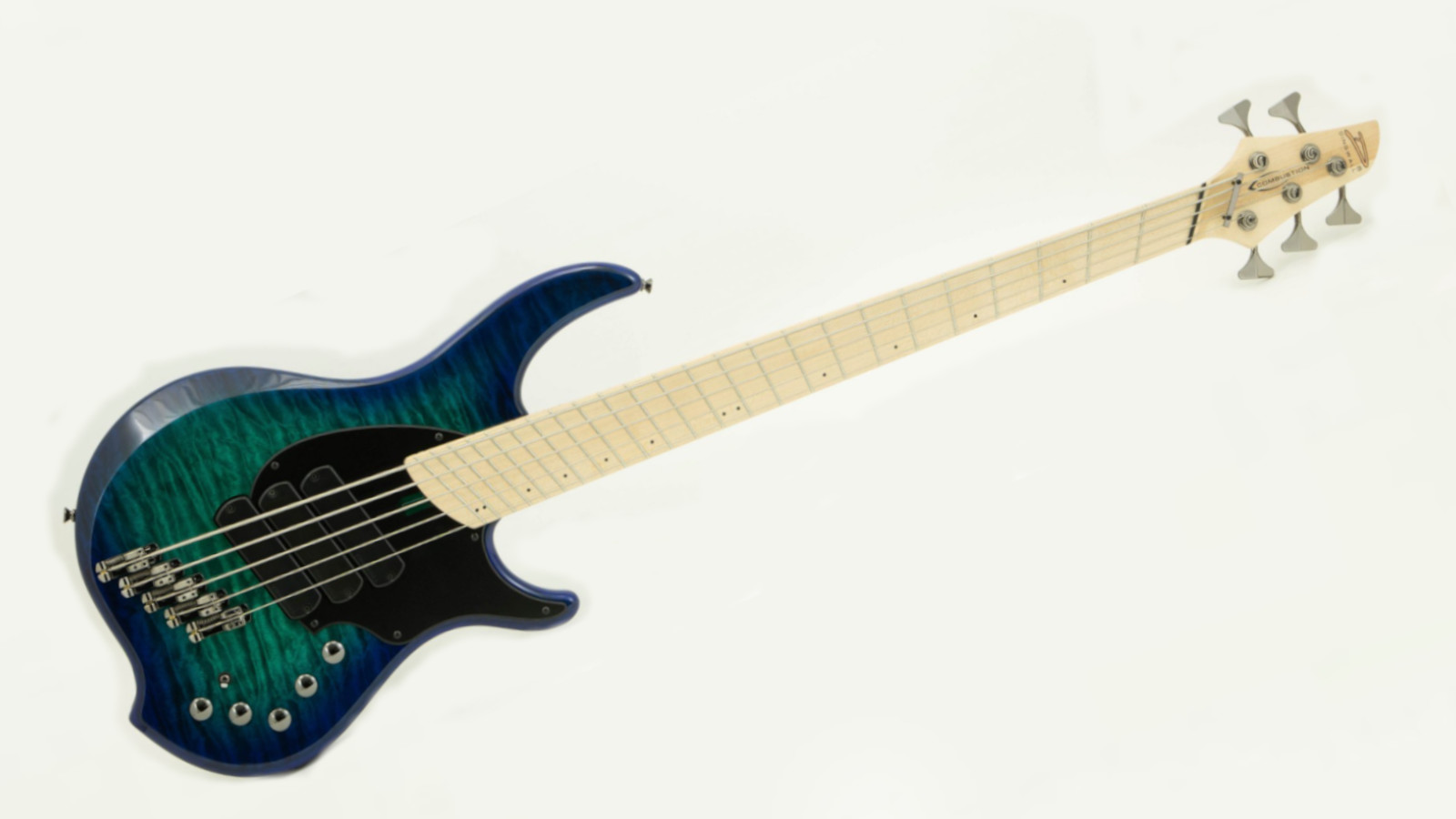
12. Dingwall Combustion 4
Our expert review:
Specifications
Reasons to buy
Reasons to avoid
Built in China, but set up and given a comprehensive quality check at Dingwall's headquarters in Canada, the Dingwall Combustion 4 offers players incredible, high-end playability, sound and looks without the super high-end price tag. Sure, they’re still not cheap, but a quick glance at the specs will tell you why.
The swamp ash body keeps the whole instrument fairly lightweight, making it a solid option for live gigs. It’s got a fanned fret fingerboard which does take a little getting used to if you're not already, but you might find that after a short period it actually feels really natural.
The pickups in this thing are amazing - there are three Dingwall FD3-Ns which offer a punchy, high output. You can get them sounding nice and smooth but also gnarly and aggressive. With an EMG 3-band EQ, active/passive toggle switch and a 4-position Quad-tone pickup selector, you’ve got a huge scope for crafting very different tones, making this a versatile beast indeed.
Best bass guitars: Buying advice
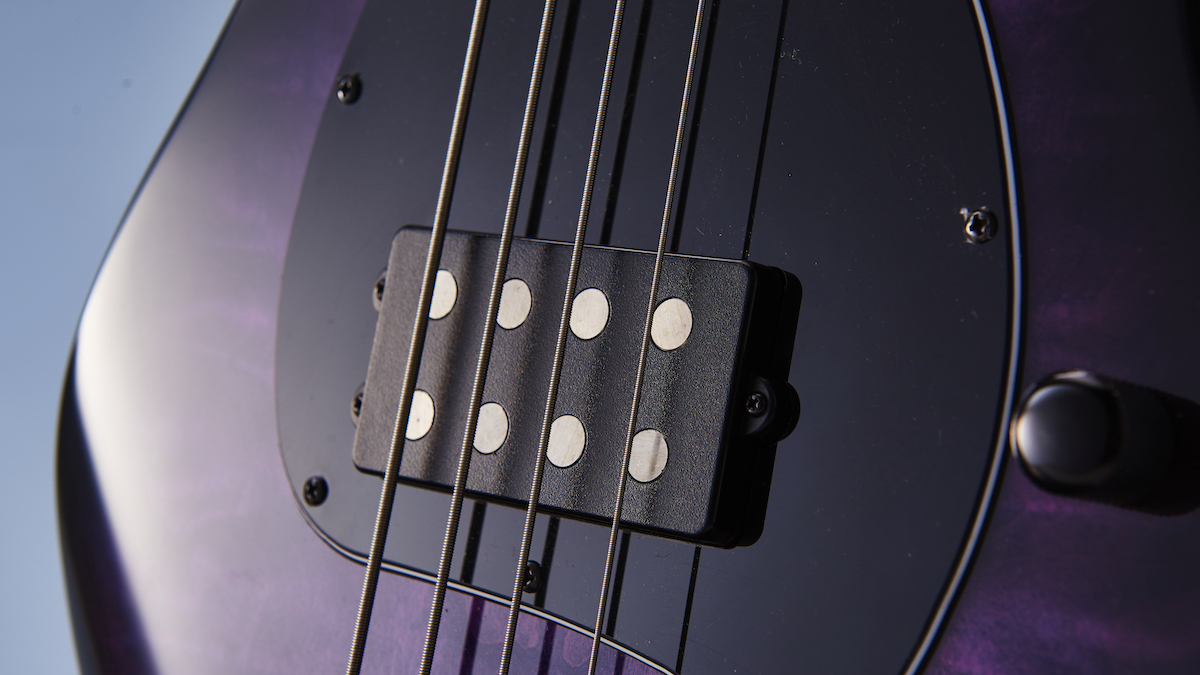
What tone do I want?
When you’re on the hunt for the best bass guitar, then arguably the most important factor to consider is what it’s going to sound like. Pickups play the biggest part in this, and there are some classic set-ups and configurations that people look to.
The Jazz and Precision basses are two of the most popular models not just by Fender, but ever made. The P has a real bassy, thunderous low end thump while the Jazz has perhaps a little more detail and nuance, especially in the top end - though of course, it’s still got lots of bottom end as well. Some basses combine these legendary tones by having the bridge pickup from a Jazz along with the split-coil Precision pickup in the middle of the body - this is referred to as a PJ set-up.
Players wanting more aggression and output from their pickups might look to humbuckers, or active pickups. Humbuckers, or even high output single coils send more signal to your amp, pushing it a little harder and resulting in a tone that can break up and distort more easily. This can be perfect for many rock and metal players.
Do I need 4 strings, or more?
Traditionally a bass guitar has four strings, tuned E, A, D, G. However, you can get 5 and even 6 string basses (and more!) that extend your frequency range. Basses with additional strings have a lower bottom string, so a 5-string will usually be tuned B, E, A, D, G, though of course you can pretty much tune it how you want.
Extended range basses are great for metal, or other genres of music that require lower notes. If you’re playing in a band with detuned guitars, then having a 5 or 6-string bass will mean you don’t need to tune lower - you’ve got the low notes there, and you don’t have to sacrifice the notes up top either! Many jazz players like 5-strings too as they allow for more movement in basslines.
Weight and comfort
The best bass for you should also be comfortable. If you’ve got a smaller handspan, then a short-scale bass might be better. Guitarists who are making their way over to the lower-end of things might also find a short-scale bass more familiar. How the body of the bass sits on you is also worth a thought; or will you be standing up with it for long periods? If so, then a lightweight bass might make things easier on your back and shoulders. The neck profile will also affect how the bass feels in your hands - again, those that are concerned about big stretches might want to look for a slimmer neck.
Fan fret or regular?
We’re seeing more and more fanned fret, or multiscale basses nowadays. These feature slightly diagonal frets which help improve intonation all over the neck. It alters the tension of the strings slightly, and also changes how you might fret certain things. Some bassists swear by them and say that it actually improves playability.
Of course it’s not a traditional fretboard layout, so it isn’t for everyone - and people are still getting on just fine with regular frets. Obviously a multiscale bass will take a little getting used to, but it might be worth considering whilst looking for the best bass guitar for you.
Do I need to use a separate bass amp?
Technically, you can use a bass through a guitar amp, however it isn’t recommended. Guitar amps aren’t designed to handle the lower frequencies put out by a bass guitar - you could actually end up causing some real damage to it, so we’d definitely suggest looking at one of the best bass amps in our guide.
How we test the best bass guitars
Here at MusicRadar, we are experts in our field, with many years of playing, creating and product testing between us. We live and breathe everything music gear related, and we draw on this knowledge and experience of using products in live, recording and rehearsal scenarios when selecting the products for our guides.
When choosing what we believe to be the best bass guitars available right now, we combine our hands-on experience, user reviews and testimonies and engage in lengthy discussions with our editorial colleagues to reach a consensus about the top products in any given category.
First and foremost, we are musicians, and we want other players to find the right product for them. So we take into careful consideration everything from budget to feature set, ease of use and durability to come up with a list of what we can safely say are the best bass guitars on the market right now.
Find out more about how we test music gear and services at MusicRadar.
Related buyer's guides
- Get started with the best beginner bass guitars
- Nail the perfect live tone with the best DI boxes
- Plug in with the best guitar cables for bass
- The best guitar straps for added comfort
- Sound better with the best guitar tuners for bass, guitar and uke
- Check out these gifts for guitarists
Want all the hottest music and gear news, reviews, deals, features and more, direct to your inbox? Sign up here.
Chris Corfield is a journalist with over 12 years of experience writing for some of the music world's biggest brands including Orange Amplification, MusicRadar, Guitar World, Total Guitar and Dawsons Music. Chris loves getting nerdy about everything from guitar and bass gear, to synths, microphones, DJ gear and music production hardware.
